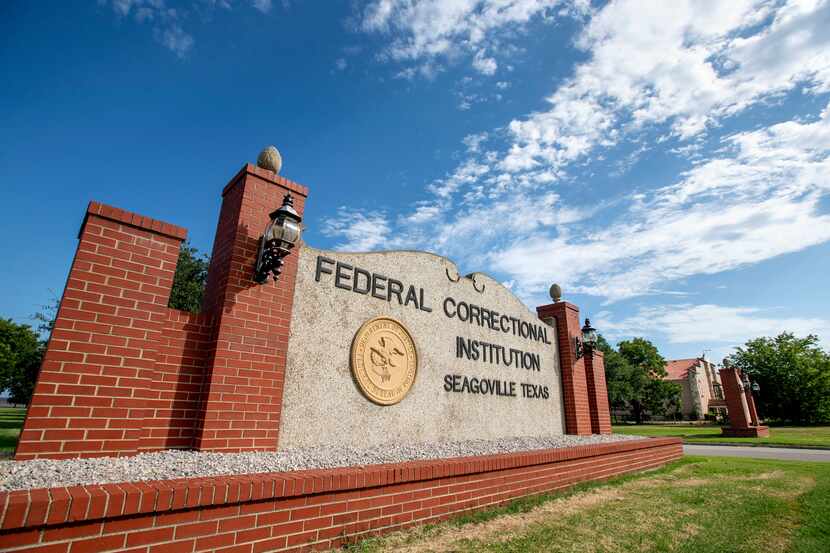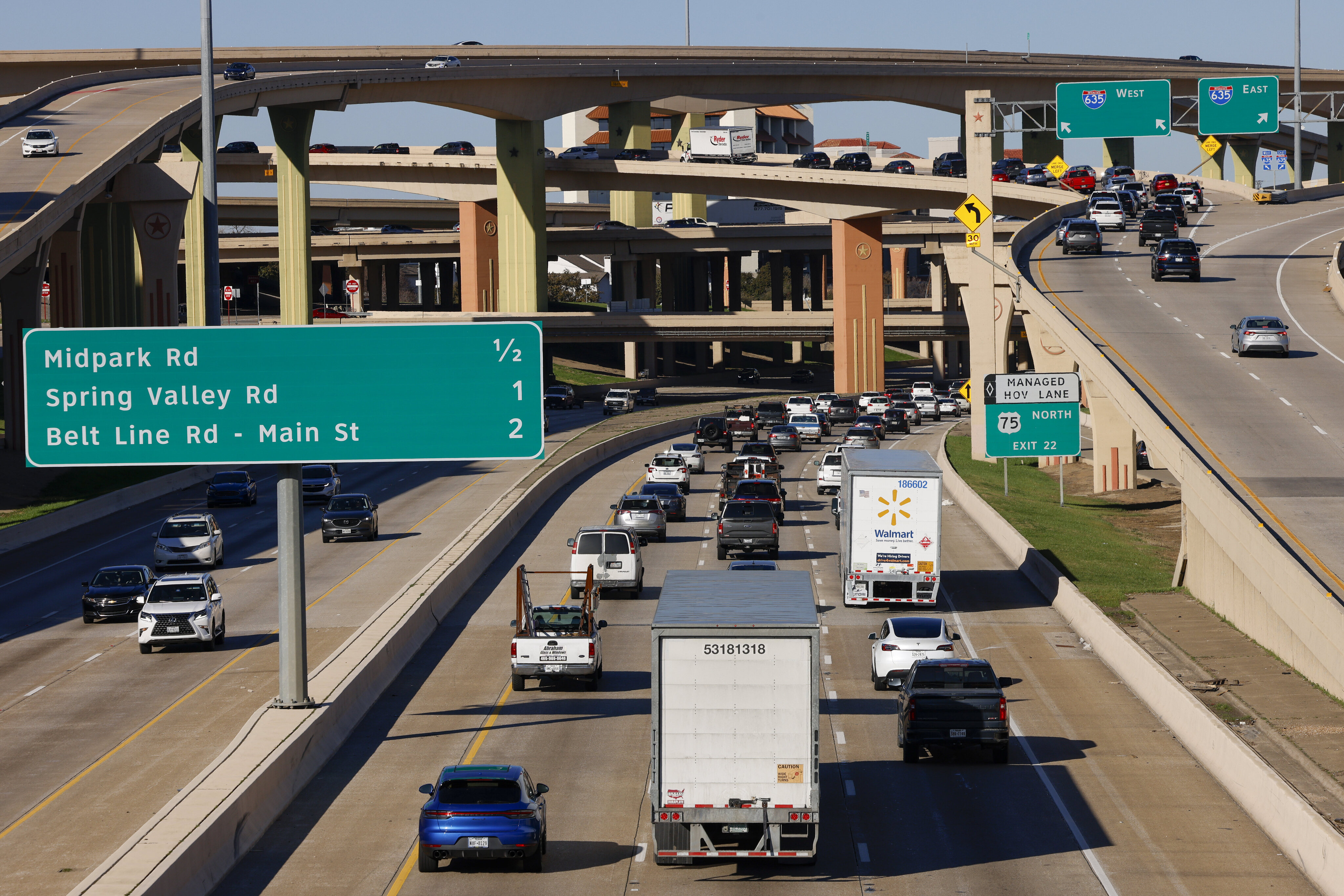After Michael Mouton tested positive for COVID-19, he said his symptoms escalated from fatigue to fever, coughing, vomiting, aches and chills.
But unlike most Americans with the coronavirus who can isolate at home, social distancing is a challenge in prisons, like the Federal Correctional Institution in Seagoville, where Mouton is serving a sentence on a federal drug charge.
He’s one of the more than 1,800 inmates in the prison, which is facing a massive outbreak of the virus. Officials at the low-security facility announced an effort about two weeks ago to mass test inmates to help identify asymptomatic prisoners. There were 61 active cases among inmates and three among employees that day. There are 882 cases as of Tuesday. That’s about 48% of the inmate population.
Mouton, who is waiting to see whether he is now negative, said many inmates feel certain they’ll catch it. They’re worried about what will happen to them when they do.
“It’s just kind of a waiting game,” he said. “Just to see how sick you’re going to get. The attitude that a lot of the inmates have is you’re either going to make it or you’re not.”
He said the prison wasn’t prepared for the outbreak. Some inmates and their families think the virus spread in the facility through the prison staff, based on multiple interviews with prisoners or their loved ones.
Officials said the prison provided masks to all staff members and inmates. The staff checks temperatures and assesses inmates for symptoms twice each day, and CDC informational flyers are posted throughout the institution, officials said. They added that most inmates who tested positive have had only mild or no symptoms and that medical staff members are on call 24 hours a day.
But inmates are concerned.
One inmate, who spoke on the condition of anonymity because of his fear of reprisals, described health care in the facility as “spotty and inadequate,” especially at night and on weekends.
The inmate, who is in the prison on child pornography charges, said the quality of food has diminished.
He said inmates have been shuffled to different areas as guards try to separate the infected inmates. But he said prisoners share restrooms, as well as phones and computers.
Orderlies have kept areas clean, he said, but it’s hard to slow the spread of a virus in such facilities with close living quarters.
“We can’t say management has been negligent,” the inmate wrote in an email. “They’ve done what they could. But these prisons aren’t built to withstand pandemics. There is no proper isolation. There is inadequate health care and slow medical response.”
Bureau of Prisons officials didn’t comment on individual concerns within the facility. Officials said the prison is following the bureau’s guidance as well as CDC guidelines for mitigating the spread of the virus in a prison setting.
“It is our highest priority to continue to do everything we can to mitigate the spread of COVID-19 in our facilities,” the bureau said in an email statement Tuesday.
‘They’re human beings'
As the virus continues to surge through the prison, many inmates are seeking a way out. In March, U.S. Attorney General William Barr wrote a memo urging the Bureau of Prisons to allow home confinement for vulnerable inmates.
Inmates can request a referral for home confinement and provide a release plan to their case managers. But officials said inmates don’t have to apply for it because the case management staff is reviewing all prisoners to determine who meets the criteria.
Nearly 6,900 inmates nationwide have been placed in home confinement during the pandemic, according to Bureau of Prisons data. But the bureau declined to say how many inmates from the Seagoville facility have been released since the outbreak began.
Prisoners and their families say whatever the number is, it’s not nearly enough.
Mouton was told he wasn’t a priority for home confinement, and though he has heard of a few inmates who were released, he said the facility is “absolutely not” allowing it for enough people.
Laura Villagomez sought to get her husband out of the facility before the current outbreak. He has diabetes, which puts coronavirus patients at a higher risk for severe outcomes.
He tested positive for the virus last week, she said. That came after a judge denied him compassionate release in June, court records show. Villagomez’s husband, who is imprisoned on federal drug charges, is not being identified because she fears he could face retaliation for her speaking out.
“They’re human beings,” she said of the inmates. “Yes, they made their mistakes, but if these people are closer to the end of their sentence, why not just release them on home confinement?”
‘They shouldn’t die in prison’
For many prisoners in the Seagoville facility, home confinement was never an option. Family members and inmates say the prison houses a lot of sex offenders, who are barred from home confinement under Barr’s memo. But a judge can still grant those inmates compassionate release.
Terry Johnson said her 62-year-old brother, who is nearing the end of his sentence for receipt of child pornography, is one of the inmates who aren’t eligible for home confinement. (Her brother is not being identified because Johnson fears reprisals against him.) He has asthma and high blood pressure — conditions that could worsen COVID-19 if he contracts it.
Court records show he is scheduled to be released in December 2021, and a judge denied him an emergency ruling for compassionate release in May.
Johnson said she understands the seriousness of her brother’s crime but said there needs to be more nuance in the criminal justice system during the pandemic, especially for inmates like him who are near the end of their sentences.
“If they weren’t sentenced to death, they shouldn’t die in prison,” she said.
Kevin Ring, president of the national criminal justice reform organization FAMM, said that because the Bureau of Prisons has discretion over home confinement, it hasn’t been granted consistently nationwide.
In addition to multiple criteria, the bureau prioritized inmates who have served at least half of their sentence or who have 18 months or less on their sentence and have served at least 25% of their term, he said. But some facilities may view those standards as strict rules while others consider them only guidelines.
“It’s hard [for families] when they see in some institutions where people are getting out who’ve served less than half, and they say, ‘That guy didn’t serve half his sentence and my loved one is just as vulnerable medical-wise,‘” Ring said. “There’s not a lot of transparency, and in BOP’s defense, it’s hard to be transparent with releasing thousands of people. You have to betray privacy about what the person’s health status was and things like that.”
Mouton is feeling better than he did weeks ago, as he awaits more testing — though he’s still having trouble breathing.
He urged the public to show compassion for inmates, many of whom are in the facility for a first offense and are fearing for their lives.
“We’re stuck in here with no information than what we get on the news. And we’re sick,” Mouton said. “So the thing in a lot of our minds is we may well never see our families again because of one mistake.”


/cloudfront-us-east-1.images.arcpublishing.com/dmn/BEIZUUMEHZARVIHW6QOLKYCNNQ.jpg)
/cloudfront-us-east-1.images.arcpublishing.com/dmn/ZMEBHUZUMRGOPNETYIGOJHZQP4.jpg)
/cloudfront-us-east-1.images.arcpublishing.com/dmn/DTVPLNF64FEOLHSEDYJPLSTRXQ.jpg)
/cloudfront-us-east-1.images.arcpublishing.com/dmn/HIYWW3S24RDTTDFYRFNTI43KI4.jpg)
/cloudfront-us-east-1.images.arcpublishing.com/dmn/GS3UVSU2EVC7XBGDJ5Q4FY5DIU.JPG)




